Powerplant Engg Unit - II
Download as pptx, pdf0 likes720 views
Gas turbine powerplants
1 of 19
Downloaded 15 times
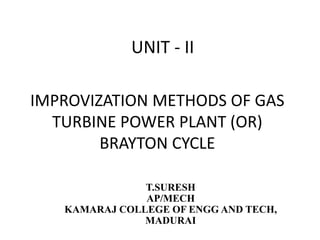


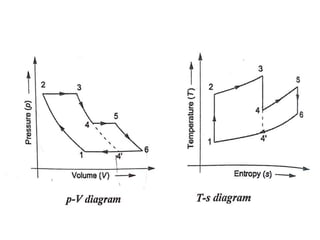
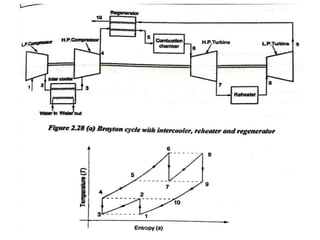
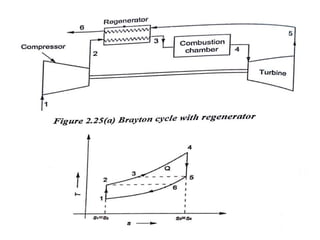
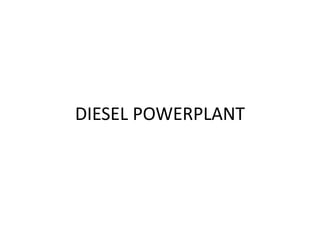

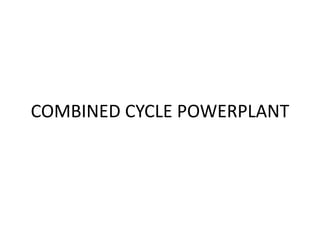
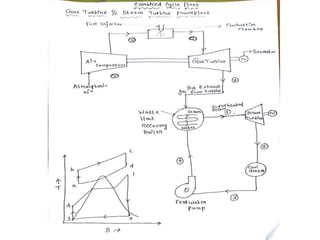
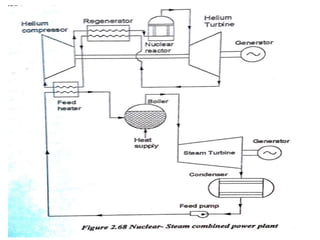
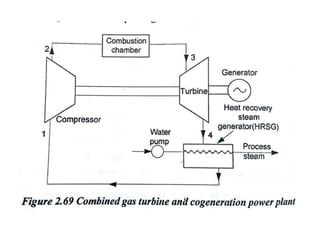

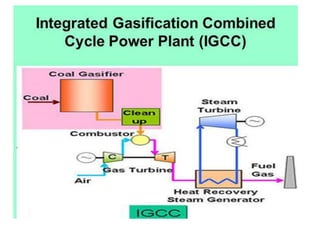
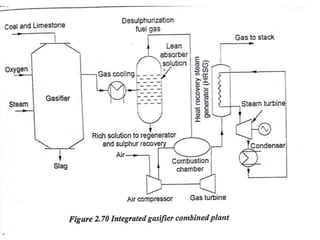
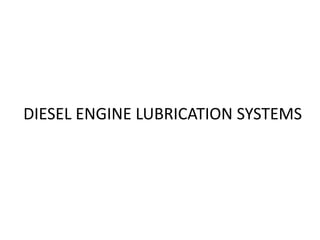

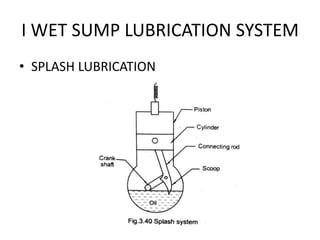

Ad
Recommended
powerplant Engg Unit 1
powerplant Engg Unit 1sureshkcet
╠²
This document provides an overview of the major components and processes involved in a coal-based thermal power plant. It discusses the key circuits in the plant including coal/ash handling, air/gas, feedwater/steam, and cooling water. It also describes site selection factors and the functions of major equipment like boilers, turbines, condensers, and cooling towers. Key coal preparation and ash removal processes are explained. Finally, it covers supercritical boilers and defines important thermal power plant concepts like steam rate and heat rate.Unit v rocket propulsion
Unit v rocket propulsionsureshkcet
╠²
This document discusses rocket propulsion and solid rocket motors. It defines propulsion as initiating or changing the motion of a body. Rocket propulsion works by ejecting propellant to create a reaction force and induce motion. Solid rocket motors use solid propellants composed of fuel, oxidizer, and binder. They provide high thrust but have low control and cannot be shut down and restarted. Performance is measured by parameters like specific impulse, total impulse, and effective exhaust velocity.Unit iii normal & oblique shocks
Unit iii normal & oblique shockssureshkcet
╠²
1. The document provides information about normal and oblique shock waves, including: Normal shock waves occur when flow is perpendicular to the shock and changes flow direction, while oblique shock waves occur at an angle and can change the flow direction.
2. Equations of motion are derived using conservation of mass, momentum, and energy across a control volume around the shock. These result in relations that allow calculation of flow properties downstream using upstream conditions and shock angle.
3. An example problem is provided to demonstrate the use of normal shock tables to calculate downstream conditions given an upstream Mach number and shock angle for an oblique shock wave. Flow properties like pressure, temperature, and turning angle are determined.Unit i basic concept of isentropic flow
Unit i basic concept of isentropic flowsureshkcet
╠²
This document discusses compressible flow through variable area ducts. Part A covers fundamentals of compressible flow including concepts like Mach number. Part B focuses on isentropic flow through nozzles and diffusers. The conservation equations for mass, momentum and energy are applied to one-dimensional, steady, inviscid flow. For frictional flow in a constant area duct, the shear stress term is included. The resulting differential equations are solved for a perfect gas.Air compressor
Air compressorsureshkcet
╠²
This document discusses air compressors and reciprocating compressors specifically. It defines an air compressor as a device that takes in atmospheric air, compresses it, and delivers it at higher pressure to a storage vessel. It then describes the basic components and working of a reciprocating compressor, including the polytropic process of compression, equations for calculating work done, factors affecting volumetric efficiency like clearance volume, and diagrams of the actual pressure-volume cycle including valve bounce and intake depression. THERMODYNAMICS - UNIT - V
THERMODYNAMICS - UNIT - Vsureshkcet
╠²
Psychrometry: Properties and processes discusses key concepts in psychrometry including:
- Psychrometry is the study of properties of air-water vapor mixtures, commonly known as moist air. Moist air consists of dry air, water vapor, and other inert gases.
- Key psychrometric properties include specific humidity, relative humidity, dry bulb temperature, wet bulb temperature, dew point temperature, and degree of saturation.
- The sling psychrometer is used to measure wet bulb temperature by whirling two thermometers, one dry and one wet, through the air. Wet bulb depression indicates the specific humidity of air.
- Dew point temperature is the temperature at which air becomes saturated when cooled at constantTHERMODYNAMICS UNIT - I
THERMODYNAMICS UNIT - Isureshkcet
╠²
This document provides an introduction to basic thermodynamics concepts. It begins by outlining the objectives of defining key vocabulary, reviewing unit systems, and explaining basic concepts like system, state, equilibrium, process and cycle. It then discusses energy and the first and second laws of thermodynamics. The document also defines properties of systems, intensive vs extensive properties, and concepts like continuum, density, and the state postulate. Finally, it covers processes, cycles, temperature scales, and pressure. The overall aim is to establish foundational thermodynamics concepts.Thermodynamics - Unit - II
Thermodynamics - Unit - II sureshkcet
╠²
1) The second law of thermodynamics leads to the definition of entropy, which is a measure of microscopic disorder and energy unavailable for useful work.
2) The Clausius inequality derives the working definition of entropy and mathematically expresses the second law. It states that the net work done by a heat engine in a cycle must be less than or equal to zero.
3) Entropy changes can be calculated using the Tds equation, where the integral of dQ/T over a reversible process between two states equals the change in entropy between those states. This allows entropy to be analyzed on temperature-entropy diagrams.THERMODYNAMICS UNIT - IV
THERMODYNAMICS UNIT - IVsureshkcet
╠²
This document discusses ideal gases and how they differ from real gases. It provides an introduction to ideal gases, noting their key characteristics and assumptions. The document then covers the ideal gas law and how it combines Boyle's, Charles', and Gay-Lussac's laws. Real gases are described as deviating from ideal behavior, especially near their critical point. Equations for both ideal and real gases are presented. The concepts of reduced properties and the principle of corresponding states for comparing real gases are also summarized.THERMODYNAMICS Unit III
THERMODYNAMICS Unit III sureshkcet
╠²
This document provides an overview of properties of pure substances and the steam power cycle. It begins by defining a pure substance and describing the three phases of matter: liquid, gas and vapor. It then explains the phase change process that water undergoes from compressed liquid to superheated vapor. Property diagrams like P-V, P-T, T-V and h-s diagrams are introduced to illustrate the thermodynamic properties. The ideal Rankine cycle and its processes are described along with methods to improve cycle efficiency like regeneration and reheat. Finally, it discusses other cycles like binary vapor cycles and combined cycles.UNIT - V ROCKET PROPULSION
UNIT - V ROCKET PROPULSIONsureshkcet
╠²
This document discusses solid rocket propulsion. It describes the key components of a solid rocket motor, including the thermal insulation, nozzle, ignition system, and solid propellant grain. Solid propellant grains can be composite, containing an oxidizer like ammonium perchlorate and a fuel like aluminum powder held together by a binder. Performance criteria for rockets include thrust, specific impulse, total impulse, and effective exhaust velocity. Solid rockets provide high thrust but have low control and cannot easily be shut down or restarted.UNIT - IV JET ENGINE PROPULSION
UNIT - IV JET ENGINE PROPULSIONsureshkcet
╠²
The document provides information about jet engine propulsion, including the major components and processes involved. It discusses the global momentum analysis and equations for jet engines. It also covers types of propulsion systems, classifications of jet engines, and the basic operation and components of jet engines such as the compressor, combustor, turbine, and nozzle. Key components and their functions are described, including how compressed air is mixed with fuel and ignited to produce thrust through exhaust exiting the nozzle.UNIT - III NORMAL & OBLIQUE SHOCKS
UNIT - III NORMAL & OBLIQUE SHOCKSsureshkcet
╠²
This document discusses oblique shock waves that occur in supersonic flows when the flow direction changes. It provides the governing equations for analyzing oblique shock waves using conservation of mass, momentum, and energy across a control volume. The equations show that an oblique shock acts like a normal shock in the direction normal to the wave. Relations are developed to determine the post-shock Mach number, static properties, and stagnation properties in terms of the shock angle and pre-shock Mach number using normal shock tables. An example problem applies these relations to analyze an oblique shock occurring at a sharp concave corner.Unit - I BASIC CONCEPTS AND ISENTROPIC FLOW IN VARIABLE AREA DUCTS
Unit - I BASIC CONCEPTS AND ISENTROPIC FLOW IN VARIABLE AREA DUCTSsureshkcet
╠²
This document discusses gas dynamics and jet propulsion. It covers fundamental concepts of compressible flow, including the energy and momentum equations. It also discusses isentropic flow through variable area ducts like nozzles and diffusers. The conservation of mass, momentum and energy are applied to one-dimensional, steady, inviscid flow. The flow is analyzed through a variable area duct and expressions are developed relating pressure, velocity, temperature and Mach number for a perfect gas. Frictional flow in a constant area duct is also analyzed.More Related Content
More from sureshkcet (6)
THERMODYNAMICS UNIT - IV
THERMODYNAMICS UNIT - IVsureshkcet
╠²
This document discusses ideal gases and how they differ from real gases. It provides an introduction to ideal gases, noting their key characteristics and assumptions. The document then covers the ideal gas law and how it combines Boyle's, Charles', and Gay-Lussac's laws. Real gases are described as deviating from ideal behavior, especially near their critical point. Equations for both ideal and real gases are presented. The concepts of reduced properties and the principle of corresponding states for comparing real gases are also summarized.THERMODYNAMICS Unit III
THERMODYNAMICS Unit III sureshkcet
╠²
This document provides an overview of properties of pure substances and the steam power cycle. It begins by defining a pure substance and describing the three phases of matter: liquid, gas and vapor. It then explains the phase change process that water undergoes from compressed liquid to superheated vapor. Property diagrams like P-V, P-T, T-V and h-s diagrams are introduced to illustrate the thermodynamic properties. The ideal Rankine cycle and its processes are described along with methods to improve cycle efficiency like regeneration and reheat. Finally, it discusses other cycles like binary vapor cycles and combined cycles.UNIT - V ROCKET PROPULSION
UNIT - V ROCKET PROPULSIONsureshkcet
╠²
This document discusses solid rocket propulsion. It describes the key components of a solid rocket motor, including the thermal insulation, nozzle, ignition system, and solid propellant grain. Solid propellant grains can be composite, containing an oxidizer like ammonium perchlorate and a fuel like aluminum powder held together by a binder. Performance criteria for rockets include thrust, specific impulse, total impulse, and effective exhaust velocity. Solid rockets provide high thrust but have low control and cannot easily be shut down or restarted.UNIT - IV JET ENGINE PROPULSION
UNIT - IV JET ENGINE PROPULSIONsureshkcet
╠²
The document provides information about jet engine propulsion, including the major components and processes involved. It discusses the global momentum analysis and equations for jet engines. It also covers types of propulsion systems, classifications of jet engines, and the basic operation and components of jet engines such as the compressor, combustor, turbine, and nozzle. Key components and their functions are described, including how compressed air is mixed with fuel and ignited to produce thrust through exhaust exiting the nozzle.UNIT - III NORMAL & OBLIQUE SHOCKS
UNIT - III NORMAL & OBLIQUE SHOCKSsureshkcet
╠²
This document discusses oblique shock waves that occur in supersonic flows when the flow direction changes. It provides the governing equations for analyzing oblique shock waves using conservation of mass, momentum, and energy across a control volume. The equations show that an oblique shock acts like a normal shock in the direction normal to the wave. Relations are developed to determine the post-shock Mach number, static properties, and stagnation properties in terms of the shock angle and pre-shock Mach number using normal shock tables. An example problem applies these relations to analyze an oblique shock occurring at a sharp concave corner.Unit - I BASIC CONCEPTS AND ISENTROPIC FLOW IN VARIABLE AREA DUCTS
Unit - I BASIC CONCEPTS AND ISENTROPIC FLOW IN VARIABLE AREA DUCTSsureshkcet
╠²
This document discusses gas dynamics and jet propulsion. It covers fundamental concepts of compressible flow, including the energy and momentum equations. It also discusses isentropic flow through variable area ducts like nozzles and diffusers. The conservation of mass, momentum and energy are applied to one-dimensional, steady, inviscid flow. The flow is analyzed through a variable area duct and expressions are developed relating pressure, velocity, temperature and Mach number for a perfect gas. Frictional flow in a constant area duct is also analyzed.Powerplant Engg Unit - II
- 1. IMPROVIZATION METHODS OF GAS TURBINE POWER PLANT (OR) BRAYTON CYCLE UNIT - II T.SURESH AP/MECH KAMARAJ COLLEGE OF ENGG AND TECH, MADURAI
- 16. DIESEL ENGINE LUBRICATION SYSTEMS
- 17. TYPES OF LUBRICATION SYSTEMS I) WET SUMP LUBRICATION SYSTEM (i) SPLASH LUBRICATION (ii) FULL PRESSURE LUBRICATION (iii) SEMI PRESSURE LUBRICATION II) DRY SUMP LUBRICATION SYSTEM
- 18. I WET SUMP LUBRICATION SYSTEM ŌĆó SPLASH LUBRICATION
- 19. (ii) FULL PRESSURE LUBRICATION
